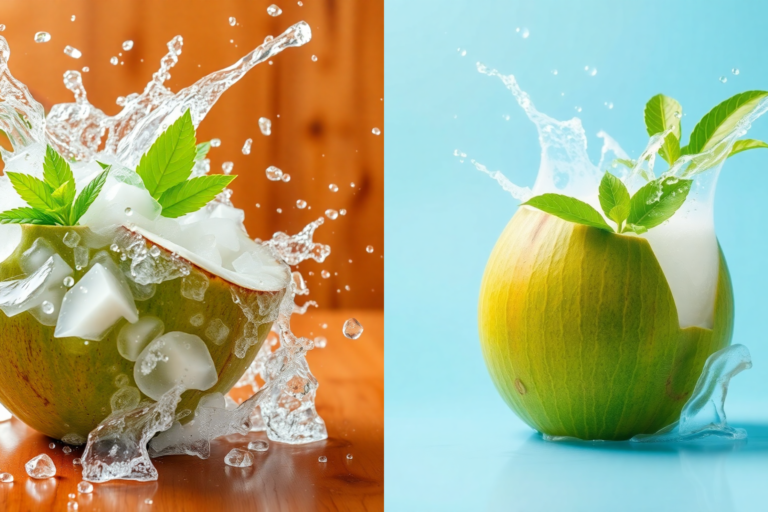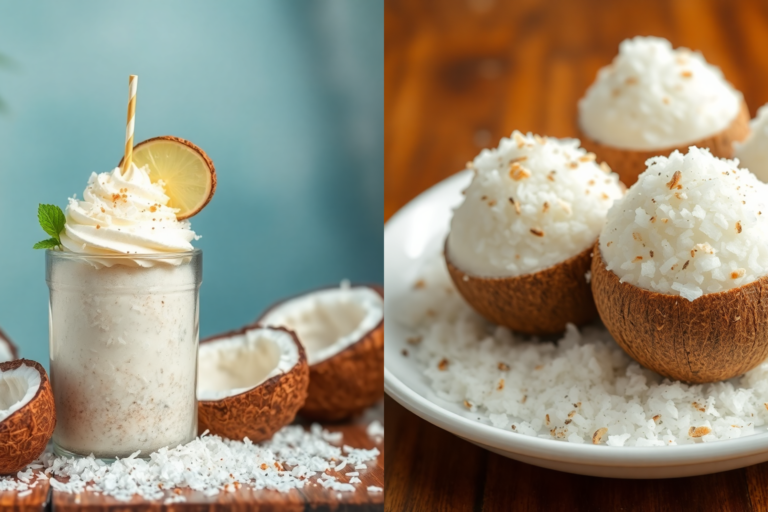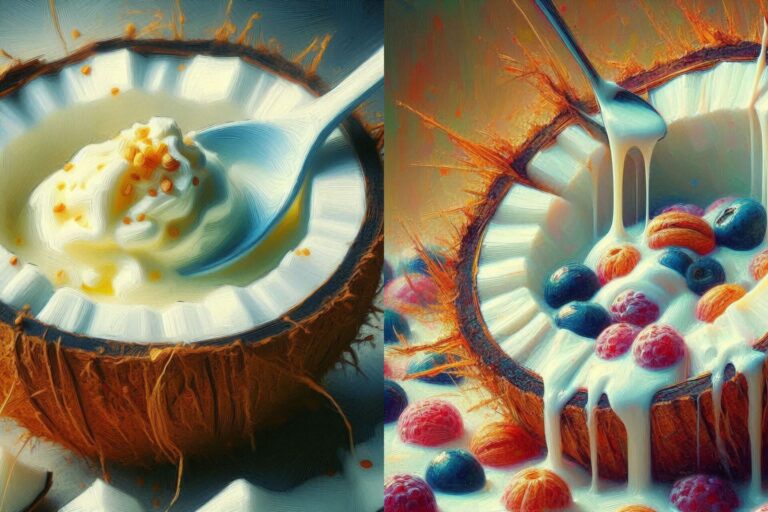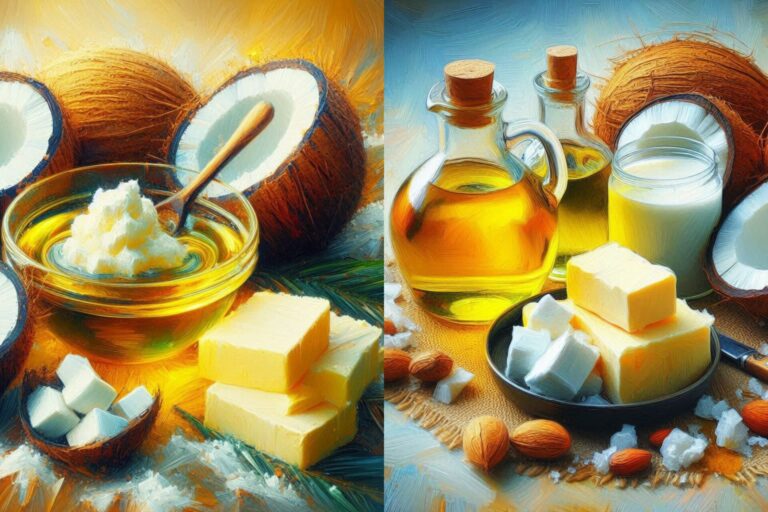Introduction: Understanding Evaporated Milk vs Heavy Cream
In the culinary world, discerning between evaporated milk and heavy cream is crucial for achieving the perfect texture and flavor in your dishes. Both ingredients play essential roles in cooking and baking, each offering its own unique characteristics that can significantly influence the outcome of your recipes.
Exploring the Differences: Evaporated Milk vs Heavy Cream
Evaporated Milk vs Heavy Cream: Two Key Players in the Kitchen
When it comes to creating rich and creamy dishes, understanding the differences between evaporated milk and heavy cream is essential. These two ingredients are staples in many recipes, prized for their ability to add depth, richness, and creaminess to a wide range of dishes.
Importance in Cooking and Baking
Achieving Desired Textures and Flavors: The Role of Evaporated Milk vs Heavy Cream
Evaporated milk and heavy cream are indispensable in the kitchen, often used to enhance the texture and flavor of various dishes. Whether you’re whipping up a savory sauce or indulging in a decadent dessert, choosing the right ingredient can make all the difference.
Why Evaporated Milk vs Heavy Cream Matters
Understanding the Distinctions: Evaporated Milk vs Heavy Cream
In cooking and baking, the choice between evaporated milk and heavy cream can significantly impact the final outcome of your recipe. From creamy soups to luscious desserts, knowing when and how to use each ingredient is key to culinary success.
Exploring Their Versatility
From Sauces to Desserts: Evaporated Milk vs Heavy Cream in Action
Evaporated milk and heavy cream offer versatility in the kitchen, each lending its unique qualities to a variety of culinary creations. While evaporated milk adds creaminess and a subtle sweetness, heavy cream brings richness and indulgence to dishes.
In Summary
Understanding the Differences: Evaporated Milk vs Heavy Cream
In summary, knowing the distinctions between evaporated milk and heavy cream is essential for any home cook or baker. By understanding their unique characteristics and applications, you can elevate your dishes and create culinary masterpieces with confidence.
What is Evaporated Milk?
In the comparison of Evaporated Milk vs Heavy Cream, understanding the distinct characteristics of evaporated milk is essential.
Defining Evaporated Milk: Evaporated milk is a concentrated dairy product made by removing about 60% of water content from fresh milk through a gentle heating process. This results in a creamy, slightly sweet liquid with a richer consistency than regular milk.
Production Process: During production, fresh milk is heated under low pressure until approximately 60% of the water evaporates. The resulting product is then homogenized, canned, and sterilized to ensure preservation.
Creamy Texture and Slightly Sweet Taste: Evaporated milk is known for its creamy texture and subtle sweetness, which adds depth and richness to dishes without being overly heavy.
Common Uses in Recipes: Evaporated milk is a versatile ingredient widely used in both sweet and savory recipes. It serves as a creamy base for soups, sauces, and desserts, adding a velvety texture and enhancing flavors.
In recipes where creaminess is desired but heavy cream is not available, evaporated milk can often be used as a suitable substitute. However, it’s important to note that the flavor and consistency may vary slightly.
If you’re interested in learning more about coconut milk recipes, please feel free to visit :
https://www.thespruceeats.com/recipes-for-coconut-milk-3891321
Evaporated Milk vs Heavy Cream: Which is Creamier?
When comparing Evaporated Milk vs Heavy Cream, it’s evident that each brings its own unique qualities to recipes. Let’s explore further.
Creaminess Factor: While evaporated milk offers a creamy texture, heavy cream takes it up a notch with its higher fat content, resulting in a richer mouthfeel and silkier finish.
Slight Sweetness vs Richness: Evaporated milk brings a subtle sweetness to dishes, whereas heavy cream adds unparalleled richness and depth of flavor.
In Recipe Applications: In recipes calling for heavy cream, evaporated milk can often be used as a lighter alternative, especially when aiming to reduce fat content without sacrificing creaminess.
Utilizing Evaporated Milk in Your Recipes
When considering Evaporated Milk vs Heavy Cream, keep in mind the versatility of evaporated milk in various culinary applications:
Soups and Sauces: Use evaporated milk to create creamy soups and sauces, adding richness without excessive heaviness.
Desserts: Evaporated milk lends a creamy texture to desserts like custards, puddings, and ice creams, enhancing their flavor profile.
Baking: It can also be used in baking recipes to yield moist and tender baked goods, such as cakes, muffins, and bread.
Incorporating evaporated milk into your recipes provides a creamy and slightly sweet touch, making it a valuable ingredient in your kitchen arsenal.
What is Heavy Cream (Heavy Whipping Cream)?
In the comparison of Evaporated Milk vs Heavy Cream, heavy cream, also known as heavy whipping cream, is a rich dairy product prized for its high-fat content and luxurious texture.
Defining Heavy Cream: The Richness Unveiled
Heavy cream is a dairy product with a high butterfat content, typically around 36-40%, which contributes to its creamy texture and richness. In the discussion of Evaporated Milk vs Heavy Cream, heavy cream stands out as a decadent addition to many recipes.
Exploring Heavy Cream’s Characteristics
In the context of Evaporated Milk vs Heavy Cream, heavy cream is renowned for its versatility in culinary applications. Its high-fat content lends itself well to whipping, making it ideal for creating soft peaks in desserts like whipped cream and mousses.
The Versatility of Heavy Cream in Culinary Applications
In the debate of Evaporated Milk vs Heavy Cream, heavy cream proves its versatility in a wide range of dishes. It adds richness and depth to savory sauces, soups, and pasta dishes, while also serving as a key ingredient in creamy desserts like ice cream and custards.
Heavy Cream: A Culinary Essential
Heavy cream’s ability to enhance flavors and textures makes it indispensable in the kitchen. Whether used to enrich a sauce or to create a luscious dessert, its creamy goodness elevates dishes to new heights in the Evaporated Milk vs Heavy Cream comparison.
Creamy Clues: Evaporated Milk vs Heavy Cream – 5 Key Differences
When it comes to achieving creamy perfection in your recipes, understanding the nuances between evaporated milk and heavy cream is essential. Let’s uncover the key differences:
1st Clue: Nutritional Composition – Evaporated Milk vs Heavy Cream
Comparing the nutritional content of evaporated milk and heavy cream reveals significant differences in fat, protein, and calorie content. While evaporated milk offers a lighter option, heavy cream boasts a rich, indulgent profile.
2nd Clue: Fat Content – Evaporated Milk vs Heavy Cream
The fat content is where evaporated milk and heavy cream truly diverge. Evaporated milk contains much less fat than heavy cream, which greatly impacts the richness and texture of dishes.
3rd Clue: Culinary Uses – Evaporated Milk vs Heavy Cream
Exploring culinary uses showcases the versatility of evaporated milk and heavy cream in cooking and baking. Evaporated milk is often used in soups, sauces, and desserts, while heavy cream shines in whipped cream, custards, and creamy pasta dishes.
4th Clue: Texture and Flavor – Evaporated Milk vs Heavy Cream
Texture and flavor play a significant role in the distinction between evaporated milk and heavy cream. Dishes made with heavy cream tend to be richer and creamier, while evaporated milk offers a lighter, slightly sweet taste.
5th Clue: Shelf Life and Storage – Evaporated Milk vs Heavy Cream
Considering shelf life and storage, evaporated milk typically has a longer shelf life when unopened but needs refrigeration once opened. Heavy cream has a shorter shelf life but can often be frozen for longer storage.
Understanding these differences between evaporated milk and heavy cream is crucial for selecting the right ingredient to achieve the desired outcome in your culinary creations.
Substitution Tips: Achieving Perfect Swaps
Substituting Evaporated Milk for Heavy Cream
When to Use Evaporated Milk: Evaporated milk can be a suitable substitute for heavy cream in recipes where a lighter texture is desired or where you want to reduce the fat content without sacrificing creaminess.
Considerations for Substitution: Keep in mind that evaporated milk has a thinner consistency compared to heavy cream, so you may need to adjust other ingredients or cooking times to compensate.
Maintaining Creaminess: To ensure similar results when substituting evaporated milk for heavy cream, you can add a small amount of butter or a thickening agent like flour or cornstarch to help achieve a creamier texture.
Recipes to Try: Evaporated milk works well in creamy soups, sauces, custards, and desserts like puddings and ice creams.
Substituting Heavy Cream for Evaporated Milk
When to Use Heavy Cream: Heavy cream is an excellent choice when you need a richer, creamier texture in your dish or dessert.
Considerations for Substitution: Since heavy cream has a higher fat content, substituting it for evaporated milk may result in a richer dish. Adjustments in other ingredients may be needed to balance flavors.
Maintaining Consistency: To achieve similar results, you may need to dilute heavy cream with a bit of milk to match the thinner consistency of evaporated milk.
Recipes to Try: Heavy cream is perfect for creamy sauces, whipped cream, custards, and rich desserts like cheesecake and cream-based soups.
Substitution Tips: Ensuring Seamless Swaps
Substituting Evaporated Milk for Heavy Cream
When to Opt for Evaporated Milk: Choose evaporated milk as a substitute when you want to lighten the dish’s texture or reduce its fat content while maintaining creaminess.
Considerations for Success: Adjusting the recipe’s other ingredients or cooking methods may be necessary to achieve a similar consistency and flavor profile.
Achieving Creaminess: Incorporating a thickening agent like cornstarch or reducing the liquid in the recipe slightly can help replicate the creaminess of heavy cream.
Recipes for Substitution: Try using evaporated milk in creamy pasta sauces, mashed potatoes, or as a milk substitute in baked goods.
Substituting Heavy Cream for Evaporated Milk
Choosing Heavy Cream Alternatives: Opt for heavy cream when you need a richer, creamier texture in your dish or dessert.
Considerations for Swapping: Due to its higher fat content, using heavy cream may result in a richer final product. Adjustments in other ingredients may be necessary for balance.
Balancing Consistency: To match the thinner consistency of evaporated milk, consider diluting heavy cream with a bit of milk or water.
Recipes for Swapping: Heavy cream shines in recipes like Alfredo sauce, creamy soups, whipped cream, and custards.
Substitution Tips: Navigating Ingredient Swaps
Substituting Evaporated Milk for Heavy Cream
Choosing Evaporated Milk: Opt for evaporated milk to lighten the texture or reduce fat content in your dish while maintaining creaminess.
Considerations for Swapping: Adjusting other ingredients or cooking methods may be necessary to achieve similar results.
Maintaining Creaminess: Adding a thickening agent or reducing the liquid can help replicate heavy cream’s richness.
Recipes to Experiment With: Evaporated milk can be used in creamy casseroles, sauces, and desserts like flan or rice pudding.
Substituting Heavy Cream for Evaporated Milk
Selecting Heavy Cream: Use heavy cream when you desire a richer, creamier texture in your recipe.
Considerations for Success: Due to its higher fat content, adjustments may be needed in other ingredients to maintain balance.
Balancing Consistency: Diluting heavy cream with milk can help match evaporated milk’s thinner consistency.
Recipes to Explore: Heavy cream elevates dishes like creamy pastas, soups, and desserts such as panna cotta or tiramisu.
Conclusion: Understanding the Creamy Clues
Summarizing the Key Differences
Discovering the nuances between evaporated milk and heavy cream is vital for mastering various culinary creations. Let’s delve into these creamy clues to enhance your cooking and baking endeavors.
Why Understanding Matters
Unlocking the Differences: Evaporated milk and heavy cream each bring unique qualities to the kitchen, influencing texture, flavor, and richness in different ways.
Summarizing the Key Differences
Exploring the key disparities between evaporated milk and heavy cream helps you make informed choices in your recipes, ensuring the perfect outcome every time.
Reiterating the Importance
Cooking and Baking Success: Whether you’re whipping up sauces, soups, or desserts, understanding the differences between evaporated milk and heavy cream is crucial for achieving the desired taste and texture.
Mastering Substitutions: Knowing when and how to substitute one for the other can save a recipe and provide flexibility in your culinary adventures.
Conclusion: Embrace the Creamy Clues for Culinary Excellence
Understanding the distinctions between evaporated milk and heavy cream is essential for elevating your dishes to new heights. Make informed decisions in the kitchen and unlock the full potential of your recipes by mastering these creamy clues.











